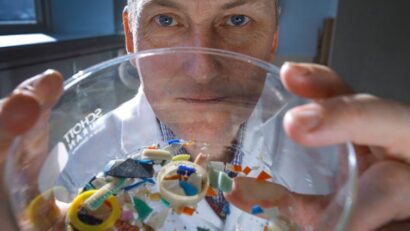
Decision to stick with single-word Ofsted judgments is all about control, not what is best for schools – former inspector
In April 2024 the Department for Education announced that there were “no plans” to change single-word Ofsted judgments. These give schools inspected by the education standards regulator an overall rating of outstanding, good, requires improvement or inadequate.
In doing so, the government has decided to ignore a consensus of heavyweight opinion in favour of abolishing single-word judgments. These include the House of Commons Education Committee, which has said in a recent report that the Department of Education and Ofsted “should work together as a priority to develop an alternative to the current single-word overall judgement”.
The voices against single-word judgments are also made up of teachers, headteachers and a former Ofsted chief inspector, as well as the family of Ruth Perry, a headteacher who tragically died by suicide following the downgrade of her school from outstanding to inadequate.
The government’s decision may seem hard to fathom. I am a former Ofsted inspector and now carry out research on school inspections, and talk to serving and former Ofsted inspectors. My view, too, is that these judgments should be abolished. And I believe that the government’s choice is more about ease of control of the education system than what is best for schools, teachers or parents.
Following Ruth Perry’s death, the government gave the impression it was open to negotiation on moving away from one word judgements. Ofsted embarked on a “Big Listen” consultation exercise to hear views on its practice, reporting, culture and impact.
But a change to these judgments is dismissed in the government’s response to the Education Select Committee’s report. This states that “there are significant benefits from having an Ofsted overall effectiveness grade.”
It’s worth exploring what the government considers these significant benefits to be, given they have won out over professional and expert recommendation.
Easy answers
The government claims that the single-word judgments offer “a succinct and accurate summary for parents”. It says that they allow for trends across the country to be observed, and show when more in-depth inspections are needed.
In other words, the single word judgement is a slick, efficient management tool which provides the Department for Education with a read out to understand a school’s performance and when it needs to step in.
Ofsted rating on a sign for a primary school in Warwickshire.
Colin Underhill / Alamy Stock Photo
The government’s response to the Education Committee’s report also says that without a single-word system, “views and decisions about schools and their performance would continue to be made, and there would continue to be consequences to inspection”. The government’s position is that it is better for these views and consequences to be linked to Ofsted’s findings, rather than “civil servants, politicians and the media looking through the narrative of reports and drawing their own conclusions”.
To my mind, this view exposes the government’s thinking that it has a monopoly of wisdom – and reveals its disinterest in nuanced discussion.
In my view, though, there is another reason why the government is so committed to single-word judgments. They allow closer control of a market-based education system that has been moved from local authority to central government control.
The 2010 Academies Act changed the set up of the English education system. Rather than being run by local authorities, most of the powers and duties for England’s schools have moved to a network of multi-academy trusts. These trusts are overseen by a set of regional directors who report to government ministers.
The academies policy was intended to increase competition and create a market-based system. Schools were to be freed from local authority control, enabling them to operate semi-autonomously within the state system. The best schools could expand and take over weaker neighbours. They were not obliged to follow the National Curriculum and could innovate radically.
But the move to academisation has led to an accumulation of powers by the Department for Education.
To enable a centrally-run, a market-based education system to stand a chance of functioning, the government needs data. This means performance measures and an inspection regime which allows school status and performance to be viewed easily.
A narrow database of school test and exam results and two day inspections make the system manageable. They avoid the complexities which professionals know characterise schools and how to improve them.
Ofsted could contribute to a less performative system of school improvement, one with less weighing and measuring and more school improvement advice, high quality teacher training and a recognition that one size does not fit all.
Instead, the government has chosen simplicity and ease of message over teacher welfare and compassion and a genuine debate over what a good school really looks like. Läs mer…








